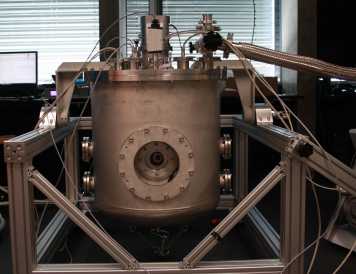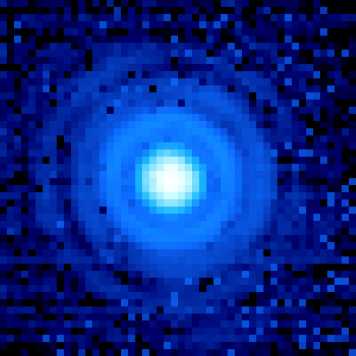Cryogenic Test Facilities
Multi-purpose cryogenic test chamber

This facility was designed, built, and commissioned with the purpose to support opto-mechanical performance measurements of cryo-mechanisms for astronomical instruments. In particular, the facility was developed initially to test the opto-mechanical stability and repeatability of the wheel-mechanisms for the ERIS/VLT instrument that are developed in house. However, the facility has a
generic application portfolio and can be used for other development projects as well. The unique setup allows optical access from the warm end with short working distance to the cold elements of only a few millimeters.
Electrical, mechanical, and liquid feedthroughs provide a exible infrastructure for a large variety of thermal, mechanical, electrical and optical tests. To provide maximum mechanical stability, the cooling is provided by a low vibration pulse tube cooler that cools the facility down to approximately 8 K. A detailed description can be found in the following Download SPIE paper (PDF, 2.9 MB).
Cryogenic Optical Testbench

In order to test diffraction-suppression and spectral dispersive optical elements from 1-5 microns, we have designed, supervised construction, and commissioned the Cryogenic Optical Test Bench. Built around a 2048x2048 1-5 micron Hawaii 2RG infrared array from Teledyne Imaging Systems (with SIDECAR-ASIC), the bench consists of a cryogenic light source, intermediate focus, two collimated sections with filter wheels and pupil wheels. Both reflective and transmissive optics can be tested. More information can be found in the following Download SPIE paper (PDF, 884 KB).

The testbench was commissioned in 2014. The picture to the left shows the first image of the diffraction limited Poit Spread Function at 3.3 µm with a beam f/# corresponding to the VLT.
The Optical Testbench was recently used to characterize diffraction suppression optics (specifically: grating vector Apodizing Phase Plate (gvAPP) coronagraphs) under cryogenic conditions. These coronagraphs will be installed in the ERIS instrument (ERIS/VLT) at the VLT and will be primarily used for the direct search of extrasolar planets in the 3-5 micron range. The tests were carried out by Dr. Anna Boehle and the results are summarised in the following Download SPIE paper (PDF, 1.7 MB).
We anticipate further use of the Optical Test Bench for the METIS/ELT project.